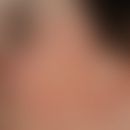HistoryThis section has been translated automatically.
Synonyms
Whistling breathing sound;
First described by
Harmless vocal cord dysfunction lasting only a few minutes was first described by Robley Dunglison. Since 1974, it has also been referred to as "Munchausen stridor" (Stier 2018).
DefinitionThis section has been translated automatically.
Stridor is an abnormal air passage that results in a whistling breath sound of varying pitch (Herold 2022 / Pfleger 2016).
You might also be interested in
ClassificationThis section has been translated automatically.
A distinction is made between inspiratory and expiratory stridor (Pfleger 2016).
An inspiratory stridor can be found e.g.
-Supralaryngeal:
- acute with:
- pharyngeal or retrotonsillar abscess.
- infantile rhinitis
- chronic in:
- thyroglossal duct cyst
- choanal stenosis
- micrognathia
- macroglossia
- supraglottic:
- acute in:
- foreign body ingestion
- epiglottitis
- trauma (inhalation)
- chronic in:
- laryngeal cyst
- laryngomalacia (benign congenital stridor [Rosenecker 2008])
- tumor
- glottic / subglottic:
- acute in:
- glottic edema
- diphtheric croup (also called "true croup")
- laryngitis subglottica
- vocal cord dysfunction
- foreign body in the larynx or esophagus causing compression
- laryngospasm
- chronic in the presence of:
- tumor
- laryngeal papillomatosis
- arthritis of the laryngeal joints
- laryngeal convolvulus
- vocal cord paresis
- Subglottic stenosis (congenital or acquired) (Michalk 2018).
Expiratory stridor is found, for example.
- acutely in the case of:
- endobronchial foreign body
- obstructive airway disease
- chronic in:
- bronchial convoluted
- vascular anomaly
- endobronchial tumor
- bronchomalacia
- Compression by lymph nodes (Michalk 2018).
- Biphasic stridor
Biphasic stridor is found, for example.
- acutely in:
- bacterial tracheitis
- chronic in:
- tracheal sigmoid
- tracheal compression due to vascular anomaly
- tracheomalacia
- cartilage malposition (Michalk 2018).
Stridor can be acute or chronic (Skirko 2022). Frequency also plays a role in diagnosis:
- High frequency:
This indicates tightness in the glottis region.
- Mid-frequency:
A mid-frequency stridor is found in subglottic constriction.
- Low frequency:
This is found in supraglottic obstruction (Michalk 2018).
Occurrence/EpidemiologyThis section has been translated automatically.
Stridor is age-dependent and occurs more frequently in males than in females.
Stridor is most common (at 26%) in children between 1 - 5 years of age in a study by Parmar (2020), followed by < one year olds at 16%, 6 - 10 year olds in 10%. In adulthood, stridor is most common in 36 - 40 year olds at 0.6%.
In contrast, Selvam et al (2017) found stridor to occur in < 1 year olds at approximately 70%, followed by 30% in 1 - 12 year olds.
The incidence of post-extubation stridor ranges from 4 - 10% after > 24 hours of endotracheal intubation (Tanaka 2021)
EtiopathogenesisThis section has been translated automatically.
Stridor is caused by an obstruction of the upper airway (Pfleger 2016). This can be triggered by:
- Laryngeal edema (Tanaka 2021).
- parainfluenza
- epiglottitis
- obstruction of the respiratory tract
- goiter
- cardiovascular arrest
- tonic-clonic seizures
- congenital diseases of the aorta (Kasper 2015)
- Congenital anomalies (Pfleger 2016) such as laryngomalacia (Skirko 2022).
- motor neuron disease = MND (rare cause [Gordon 2021])
- As post-extubation stridor (PES [Tanaka 2021]).
Acute stridor is usually caused by viral or bacterial infections or by foreign body aspiration, whereas the chronic course is usually caused by a congenital anomaly of the laryngeal structures, congenital subglottic hemangiomas, or vocal fold paresis (Skirko 2022).
PathophysiologyThis section has been translated automatically.
In glottic or supraglottic obstruction, an inspiratory sound occurs during breathing.
If the obstruction is below the glottis and/or there is severe upper airway obstruction, stridor occurs during expiration (Pfleger 2016).
LocalizationThis section has been translated automatically.
Extrathoracic stridor:
This originates in the upper airways, upper trachea to subglottic region and manifests as inspiratory stridor.
Intrathoracic stridor:
Intrathoracic stridor originates in the lower trachea or bronchi and manifests as expiratory stridor.
Biphasic Stridor:
Constrictions in the middle trachea express themselves both inspiratory and expiratory and are referred to as biphasic stridor (Michalk 2018).
ClinicThis section has been translated automatically.
- Subglottic stenosis:
Symptoms do not occur in subglottic stenosis until stenosis is >50%. The most common symptoms are dyspnea, chronic cough, wheezing (Jering 2021), change in voice, problems with swallowing, pain in the pharynx (Parmar 2020).
- Foreign body aspiration:
This initially presents with sudden cough, dyspnea, whistling breathing, stridor, and possibly cyanosis (Eich 2015).
- Congenital anomalies:
Stridor usually develops in the first 1-2 months of life in laryngomalacia and is position-dependent. It usually does not affect growth and development. Only in a severe form of laryngomalacia, cyanosis, problems with feeding and insufficient weight gain may occur (Skirko 2022).
- Motor neuron disease:
In subacute onset with dysphonia, dyspnea, and stridor, motor neuron disease should always be considered as well (Gordon 2021).
DiagnosticsThis section has been translated automatically.
The patient's medical history should be obtained in particular for previous diseases of the throat and thorax, as well as for any existing tumors or bronchial asthma. The temporal course of the stridor is also important.
The physical examination should primarily clarify whether emergency intervention is necessary (Brunkhorst 2021).
ImagingThis section has been translated automatically.
- X-ray of the soft tissues of the neck
For laryngeal diagnostics, an a. p. soft tissue x-ray is required, and for epiglottis diagnostics, a lateral soft tissue x-ray. However, the X-ray examination with high KV- load is rather of secondary importance. (Michalk 2018).
- Laryngeal ultrasound
Laryngeal ultrasound (LUS) represents a non-invasive examination method and is primarily used in children for the diagnosis of stridor. With regard to general laryngeal disease, sensitivity is 87% and specificity is 100% (Friedman 2019).
- Airway Endoscopy:
Bronchoscopy is the main investigative modality.
Rigid bronchoscopy should be used to confirm respiration in cases of higher grade stenosis or manipulation of central airway stenoses (Brunkhorst 2021).
Flexible bronchoscopy can better assess vocal cord movement, laryngeal or tracheal stability (Schramm 2020).
- Esophagogram:
This can be used to localize narrowing in the esophageal area (Michalk 2018).
- Magnetic resonance imaging:
An MRI of the neck is primarily used to visualize the retropharynx, mediastinum, and great vessels (Michalk 2018).
Other methods of examination This section has been translated automatically.
- Spirometry
Spirometry and the flow-volume curve can be used to differentiate fixed and dynamic extra- or intrathoracic airway stenoses (Brunkhorst 2021).
- Bodyplethysmography
Bodyplethysmography provides evidence of central stenosis or obstruction of the bronchi. In addition, a bronchial provocation test with methacholine can be performed in cases of suspected bronchial asthma (Brunkhorst 2021).
General therapyThis section has been translated automatically.
In stridor, therapy depends on the cause of the condition.
- - Congenital stridor:
A congenital stridor normally grows out with time. However, if there are disturbances in the development or feeding of the children, a presentation to the ENT doctor is recommended (Skirko 2022).
Operative therapieThis section has been translated automatically.
Surgical measures such as supraglottoplasty may be required for congenital stridor (Skirko 2022).
Progression/forecastThis section has been translated automatically.
Prognosis is also dependent on the etiology causing the stridor.
Note(s)This section has been translated automatically.
General information
Stridor can be both an acute life-threatening event or a harmless disorder (Michalk 2018).
LiteratureThis section has been translated automatically.
- Brunkhorst R, Schölmerich J (2021) Internal medicine - differential diagnosis and differential therapy:Klug entscheiden - gut behandeln. Elsevier Urban and Fischer Publishers Germany 226 - 227.
- Eich C B et al. (2015) Interdisciplinary care of children after foreign body aspiration and foreign body ingestion. AWMF Guidelines Register No. 001 / 031.
- Friedman S, Wasserzug O, Derowe A, Fishman G (2019) The role of laryngeal ultrasound in the assessment of pediatric dysphonia and stridor. Journal of Pediatric Otorhinolaryngology. (122) 175 - 179
- Gordon B, Joyce E, Counihan T J (2021) Stridor: a rare presentation of motor neuron disease. BMJ Case Rep. 14 (7) e241923. doi: 10.1136/bcr-2021-241923.
- Herold G et al (2022) Internal Medicine. Herold Publ. 329, 361
- Jering M, Zenk J (2021) Preparation for the otolaryngology residency examination. Sequence 53
- Kasper D L et al (2015) Harrison's Principles of Internal Medicine. Mc Graw Hill Education 234 - 235, 979, 1622, 1637, 1676, 1768, 1794, 2202, 2302, 2863, 3442.
- Michalk D, Schönau E (2018) Differential diagnosis pediatrics. Elsevier Urban and Fischer Publishers Germany 312 - 314.
- Parmar D, Nigam R, Gangwani V, Nigam R (2020) A study of etiology and management of stridor. JMSCR 8 (7) 595 - 600
- Pfleger A, Eber E (2016) Assessment and causes of stridor. Paediatr Respi Rev (18) 64 - 72.
- Rosenecker J, Schmidt H (2008) Pediatric history, examination, diagnosis Springer Verlag Heidelberg 112.
- Schramm D et al (2020) Airway endoscopy in childhood. AWMF online AWMF- Register- No. 026 / 025
- Skirko J (2022) Childhood respiratory conditions: stridor. FP Essent. (513) 25 - 31
- Stier B, Schwab K O, Weissenrieder N (2018) Adolescent medicine. Springer Verlag Germany 163
- Tanaka A, Uchiyama A, origuchi Y, Higeno R, Sakaguchi R, Koyama Y, Ebishima H, Yoshida T, Matsumoto A, Kanaki- Sakai, Hiramatsu D, Iguchi N, Ohta N, Fujino Y (2021) Predictors of post-extubation stridor in patients on mechanical ventilation: a prospective observational study. Scientific Reports 11 (19993)
- Trautmann A (2006) Allergy diagnosis / allergy therapy. Thieme Verlag 77
- Valman H B (1981) ABC of 1 to 7. stridor. Br Med J (Clin Res Ed) 283 (6286) 294 - 295.
Disclaimer
Please ask your physician for a reliable diagnosis. This website is only meant as a reference.




